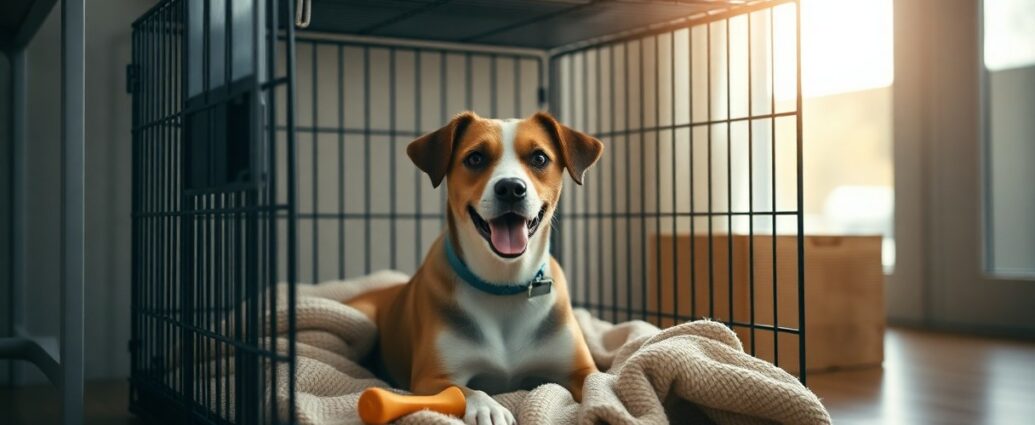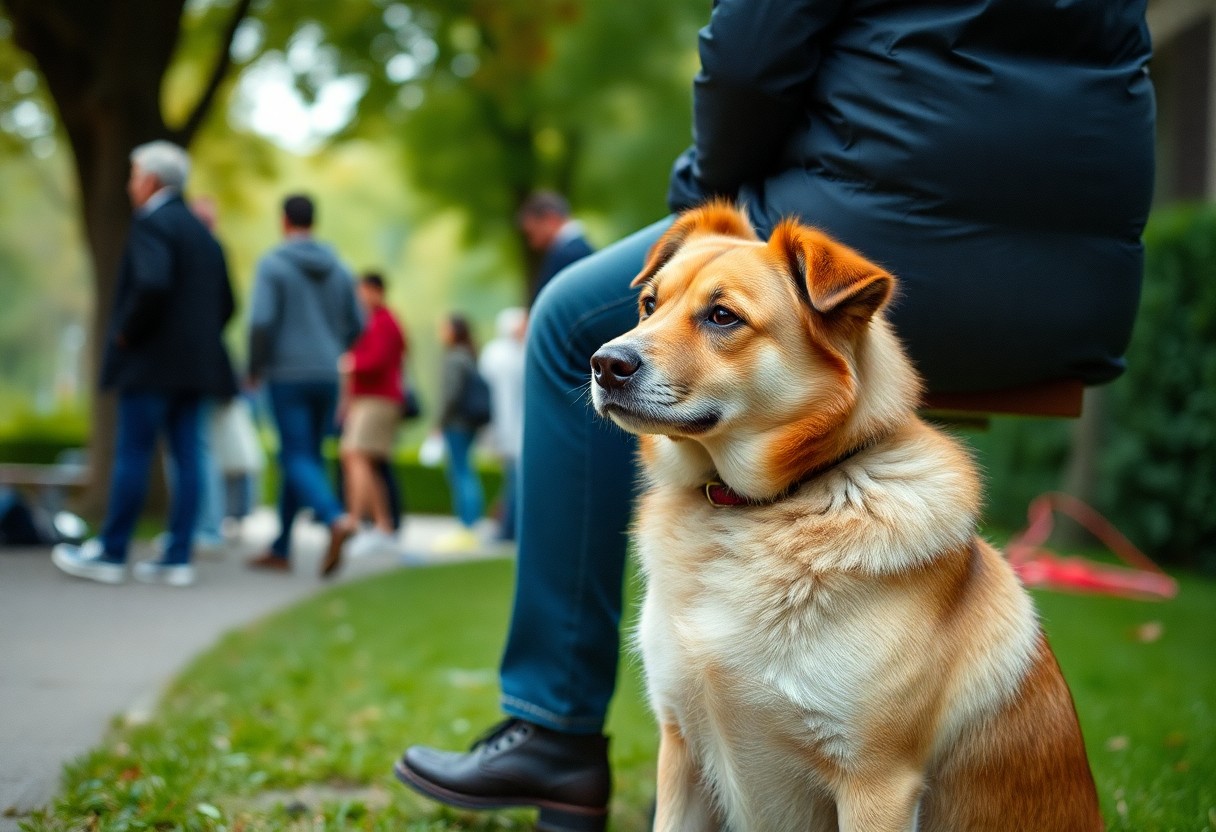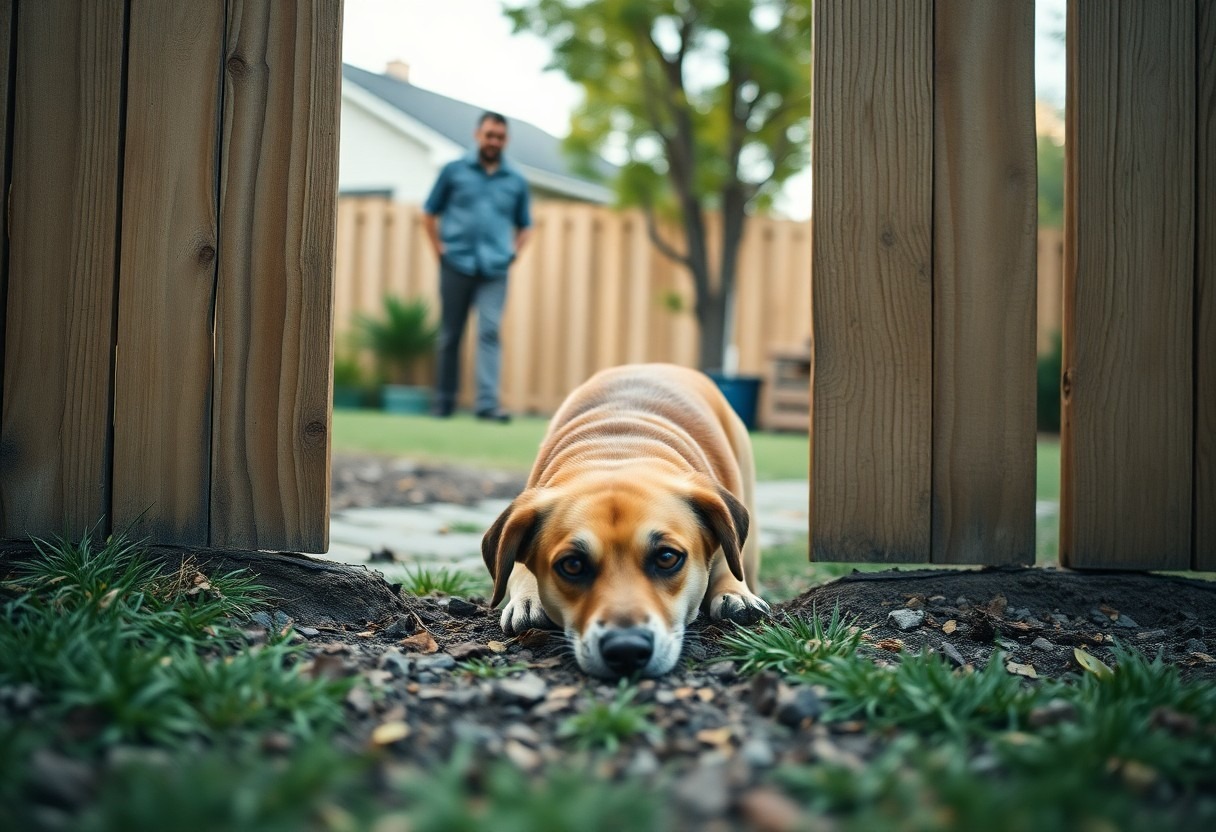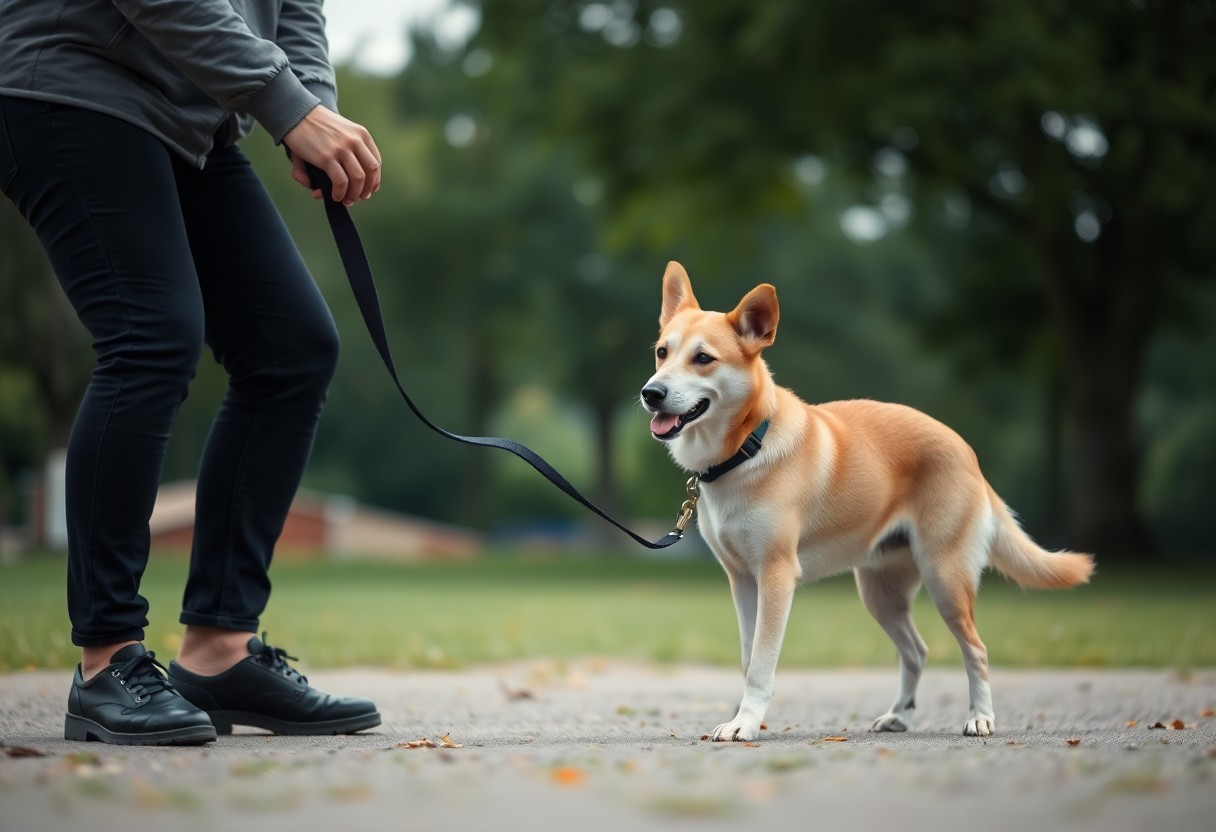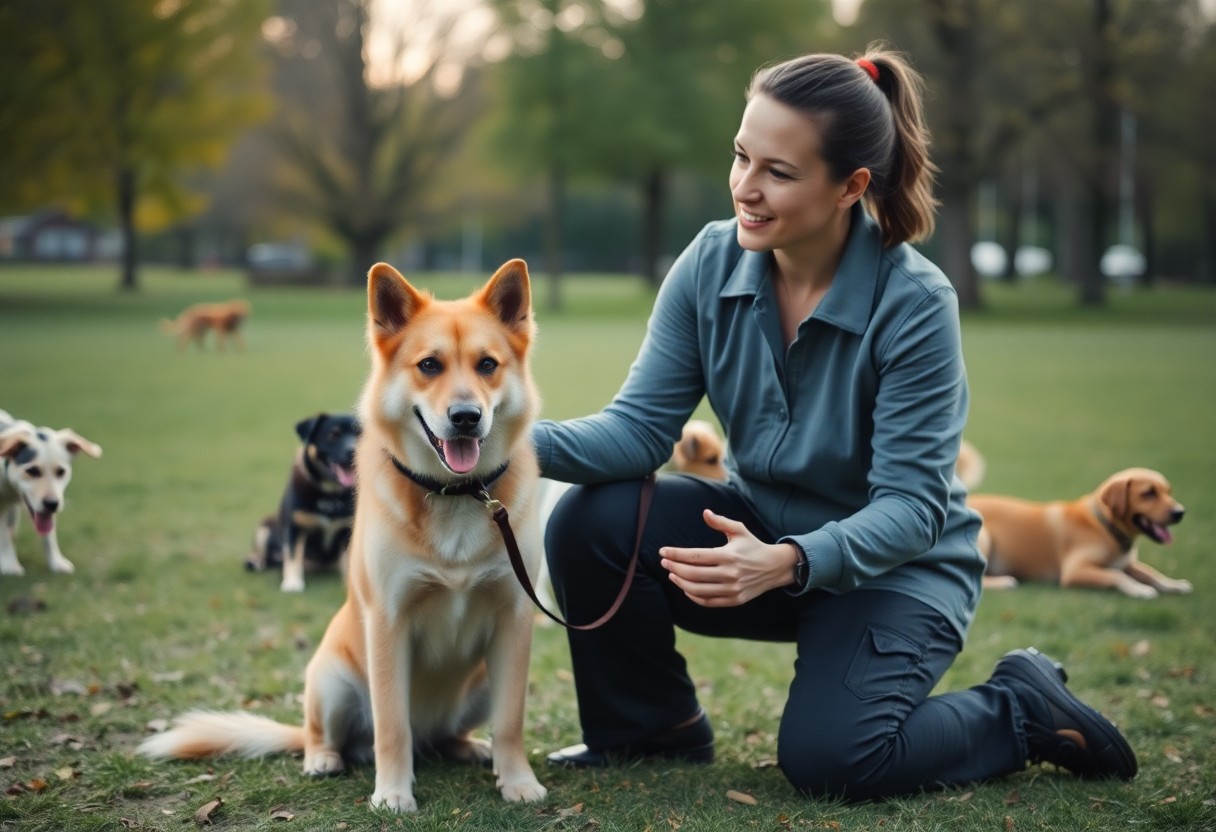Just like you, I want my furry friend to feel safe and comfortable in their own space. Crate training can be a fantastic way to provide your dog with a cozy den-like environment while also teaching them important boundaries. In this post, I’ll share the best methods to crate train your dog, ensuring you both enjoy the process. From choosing the right crate to using positive reinforcement techniques, you’ll find helpful tips that can make crate training a rewarding experience for both you and your pet.
Key Takeaways:
- Choose the Right Crate: Select a crate that is the appropriate size for your dog, allowing them to stand, turn around, and lie down comfortably.
- Introduce Gradually: Allow your dog to explore the crate slowly, using positive reinforcement such as treats or toys to create a positive association.
- Establish a Routine: Maintain a consistent schedule for crate time, including meals, bathroom breaks, and playtime to help your dog adjust.
- Use Positive Reinforcement: Reinforce good behavior with praise and treats when your dog enters the crate willingly.
- Avoid Negative Associations: Never use the crate as a form of punishment; it should be a safe space for your dog.
- Start with Short Durations: Begin with short periods in the crate and gradually increase the time as your dog becomes more comfortable.
- Monitor Comfort Levels: Watch for signs of stress or anxiety, and adjust crate time accordingly to ensure a positive experience.
Understanding Crate Training
What is Crate Training?
The process of crate training involves teaching your dog to see their crate as a safe, comfortable space. This method is not just about confining your furry friend but rather creating a cozy den-like environment where they feel secure. By using the crate for training, I aim to help my dog understand that it is a pleasant place to retreat to during chaotic times or when I’m not able to supervise them closely.
Across many dog ownership experiences, people have found that dogs naturally gravitate toward enclosed spaces. Having a crate allows them to have a personal area where they can feel protected, much like they would in the wild. This leads to increased relaxation and overall happiness for your pup, making it an effective tool for many aspects of dog training.
Benefits of Crate Training
One of the most significant advantages of crate training is providing your dog with a sense of security. When they are in their crate, they can decompress and feel at ease, especially during stressful situations such as thunderstorms or fireworks. Creating a routine that includes crate time can also help with potty training since dogs typically won’t soil their sleeping area. This can significantly speed up the training process and establish good habits.
Additionally, using a crate fosters a safe environment for your dog when you are not at home. It becomes a sanctuary where they can stay out of trouble and away from potential dangers, such as chewing on hazardous objects. This safety net can also reduce anxiety for both you and your dog, knowing that they are protected while you’re away.
Training your dog to use a crate can positively impact their behavior, making it an excellent practice for both you and your furry companion.
Debunking Common Myths
Crate training often comes with misconceptions that may discourage you from trying it. Many people believe that using a crate is equivalent to locking your dog away and depriving them of freedom. In reality, I find that, with the right approach, a crate serves as a secure and comforting place for my dog, rather than a prison. By gradually introducing my dog to their crate and leaving the door open at times, they learn to see it as a safe haven rather than a punishment.
Another common myth is that dogs will feel abandoned in their crates. With positive reinforcement and patience, your dog can learn that the crate is not a place of solitude but rather a special spot that is all theirs. By incorporating interactive toys and treats, I help my dog associate their crate with positive experiences. They start to enjoy their crate time instead of viewing it with disdain.
The truth is, when crate training is done ethically and with care, it can enhance your dog’s quality of life and improve your relationship.
Choosing the Right Crate
Any dog owner knows that selecting the right crate is key to effective crate training. The perfect crate can help your pup feel safe and secure, turning it into their personal sanctuary. As I examine this topic, let’s explore the different types of crates you’ll come across when searching for the right one.
Types of Crates
| Wire Crates | Open design allows for ventilation and visibility |
| Plastic Crates | Provides a cozy, den-like feeling; ideal for travel |
| Soft-sided Crates | Lightweight and portable, but less durable |
| Heavy-duty Crates | Perfect for strong or large breeds that need extra security |
| Customized Crates | Made to order and can fit any space or design |
- Wire crates are ideal for indoor use.
- Plastic crates make dog travel easier.
- Soft-sided crates are excellent for camping or trips.
- Heavy-duty crates prevent escape from determined dogs.
- Customized crates can complement your home decor.
Recognizing the variety of options available will help you select a crate that meets your dog’s needs and your preferences.
Size Matters: Finding the Perfect Fit
Perfect fit is vital when it comes to selecting the right crate for your pup. The crate should be spacious enough for your dog to stand up, turn around, and lie down comfortably. If the crate is too big, your dog might feel insecure and may use one corner as a bathroom. Conversely, a crate that is too small can make your dog feel cramped and uncomfortable, undermining the whole training process.
Considering the breed and age of your dog will help in choosing the size. For instance, a growing puppy may initially require a smaller crate that can be expanded as they grow. You might want to invest in a divider that allows you to adjust the size as your furry friend grows. This is a great way to save money while ensuring your dog always has a comfortable space.
Where to Place the Crate
Right placement of your dog’s crate is crucial for successful crate training. I recommend putting the crate in a location that feels safe but is still part of the family’s daily activity. This way, your dog can feel included while having their own space. Avoid placing the crate in isolated areas, as this can magnify feelings of loneliness, resulting in negative associations with the crate.
Further, ensure that the crate is away from direct sunlight or drafts to keep your dog comfortable. A cozy blanket or familiar toy inside the crate will also make it feel more inviting. You might consider using the crate for relaxation times or safe place when guests arrive, reinforcing its positive role in your home.
Preparing Your Dog for Crate Training
To successfully crate train my dog, it’s vital to lay a solid foundation that will help him feel comfortable and safe in his new space. Understanding how to prepare your dog is an important step, as it allows for a smoother transition. I’ve found that a little effort invested upfront makes a big difference in achieving a positive experience for both you and your pet.
Getting Your Dog Comfortable
Before introducing the crate, I like to make sure my dog is already familiar with the space where the crate will be placed. I’ll set it up in a quiet area of the house, allowing my dog to explore and sniff around it at his own pace. If your dog shows any signs of hesitation, don’t force him to step inside just yet. Instead, I recommend using treats or his favorite toys to encourage him to linger nearby, turning the crate into a safe haven in his mind.
Once my dog is comfortable being in the crate area, I’ll take it a step further by inviting him to enter the crate for short periods. I begin with the door open, allowing him to go in and out freely. This helps alleviate any anxiety he might have about being confined. By creating those initial positive experiences, you set the stage for a successful crate training adventure.
Creating Positive Associations
The goal of crate training is to develop positive associations in your dog’s mind about the crate as a safe and welcoming space. I make it a point to fill the crate with cozy bedding and some of my dog’s favorite toys, helping him see it as his personal retreat. To further enhance this process, I always reward my dog with treats or praise when he approaches or enters the crate. This reinforces the idea that good things happen when he is near or inside the crate.
Even simple actions like feeding your dog his meals in the crate can lead to positive experiences. It’s all about ensuring that your dog associates the crate with pleasant moments in his life. By maintaining a consistent approach and showering him with affection, you will help establish a solid connection that encourages him to view the crate as a positive environment.
Gradual Introduction Techniques
Positive reinforcement is key when it comes to gradually introducing your dog to the crate. I generally start by encouraging my dog to enter the crate for a few minutes at a time, ensuring he remains calm and comfortable. At this stage, I’m not shutting the door yet; I want him to feel in control. Once he seems at ease, I’ll gradually increase the duration he spends inside, always rewarding him with verbal praise or treats when he stays calm.
Gradual introduction techniques allow my dog to adjust to his crate without feeling overwhelmed. If I notice any signs of distress, I make sure to take a step back and move more slowly. The aim is to cultivate a positive and unhurried experience that gradually builds up his comfort level. Keeping this slow pace is key, as it encourages your dog to view the crate not as a prison but as his safe spot in your home.
Effective Training Techniques
After submerging into the world of crate training, I found that using the right methods can transform the process into a positive experience for both you and your dog. To help you get started, I recommend checking out this great Crate training advice for 9 week old puppy : r/puppy101. It’s packed with helpful insights from fellow dog owners who have navigated similar challenges.
The Power of Positive Reinforcement
Any time I train my dog, I find that using positive reinforcement is incredibly effective. Whenever your pup enters the crate or shows any sign of comfort, rewarding them with treats or praise can go a long way. This method encourages your dog to associate the crate with positive experiences, making them more likely to seek it out in the future. The key is to be consistent; your pup should always know that they did something great when they’re respectful of their crate.
Moreover, this technique can build their confidence as well. I’ve seen how my dog’s tail wags excitedly whenever I mention the crate after a successful session. It’s heartwarming to witness their joy, knowing that I’m helping them feel safe in their designated space!
Establishing a Routine
Between meal times, potty breaks, and play sessions, establishing a consistent routine is necessary for successful crate training. Your dog thrives on predictability, and creating a schedule can help them understand when it’s time to enter the crate and when it’s time to come out. For example, I make it a point to take my pup out after meals and before bedtime, which has significantly reduced accidents in the crate.
Positive reinforcement also plays a role here since I reward my dog every time they head into the crate willingly. By sticking to this routine, they feel secure knowing that each crate session is just a part of the day’s rhythm.
Considering your dog’s attention span, I also find that keeping training sessions brief and focused can lead to greater success. Short sessions help to avoid overwhelming them and allow their learning to build gradually. Each time your pup enters the crate successfully, no matter how small the step, you’re building their trust and comfort.
Short Sessions for Success
Between 5 to 10-minute training intervals have worked wonders for me while crate training. I’ve learned that if I prolong the sessions too much, my dog may become restless or anxious. Keeping those initial sessions brief allows them to remain engaged while they learn. I often switch up the activities we do in and around the crate to keep it fresh and exciting.
Ultimately, by keeping these sessions light and enjoyable, I notice my dog is more willing to cooperate. Making each crate experience a positive one not only helps with immediate training goals but also fosters a lasting bond of trust between us.
Troubleshooting Crate Training Issues
Unlike some training methods that yield immediate results, crate training can sometimes present challenges. If you find your dog exhibiting certain behaviors that hinder their training progress, don’t worry! I’ve encountered some common issues myself, and I can help you navigate through them.
Excessive Barking or Whining
Among the most frustrating situations I faced during crate training was when my dog would start barking or whining excessively. This behavior is usually a sign that your dog may be feeling anxious or frustrated about being in the crate. The first step you can take is to ensure that your dog is comfortable and has had a good exercise session before being crated. Providing them with a cozy blanket or a favorite toy can also help.
It’s imperative to avoid reinforcing this behavior by letting your dog out of the crate when they are vocal. Instead, wait for a moment of silence before rewarding them by opening the crate door. This way, your dog learns that being quiet is the key to your attention. Over time, they will associate the crate with calmness and relaxation rather than stress and agitation.
Refusal to Enter the Crate
Whining and hesitance about entering the crate can be a common issue I’ve faced. Your dog may be unsure about the crate, or they might feel it’s a punishment rather than a safe space. To change their perception, I recommend making the crate a positive and inviting environment. You can do this by throwing in some treats or toys to encourage them to explore it on their own.
Additionally, you can try feeding your dog their meals near or inside the crate to create a positive association. Never shove them inside, as this can lead to a negative experience. With time and plenty of patience, your dog will likely find confidence in using the crate as their personal sanctuary.
For instance, if your dog is consistently avoiding the crate, you might need to reassess its location. Is it in a quiet area, or does it feel isolated? You can try moving it into a room where the family gathers to help your dog feel more included and secure.
Accidents Inside the Crate
On occasions, I realized that my dog had accidents inside the crate, which can be quite disheartening. It’s imperative to understand that accidents happen, especially when your dog is still learning. One reason for this could be that they are crated for too long. If your dog needs to relieve themselves and doesn’t have the opportunity to go outside, they may feel compelled to do so in their crate.
To mitigate accidents, you can establish a regular potty schedule, especially after meals, playtime, or naps. If an accident occurs, it’s imperative not to punish your dog, as this can increase anxiety, leading to more accidents in the future. Instead, clean up with an enzyme cleaner to fully eliminate odors which may lead them to go in the same spot again.
Enter this journey of crate training with love and understanding, and you’ll be able to build a strong, trusting relationship with your dog. Be consistent, patient, and always strive for a positive experience, and your efforts will undoubtedly pay off!
Maintaining Crate Training Success
Once again, I want to emphasize the importance of maintaining the positive outcomes of crate training even as your dog grows and adapts to their surroundings. Consistency is key; a reliable routine can help reinforce your dog’s understanding of their space while fostering their security within it. As your pup becomes accustomed to their crate, you can start introducing short periods of freedom in a controlled manner, allowing them to explore other areas of your home but still nurturing that sense of safety the crate provides.
Transitioning from Crate to Freedom
On this journey, it’s vital to gradually extend the amount of time your dog spends outside their crate while ensuring they’re still comfortable and confident. Begin by allowing your pup a few minutes of freedom while you supervise directly. If they behave well, gradually increase these periods, allowing your dog to experience more independence. Watching for signs of anxiety or signs of destructive behavior will help you gauge if you’re moving too fast.
On the other hand, I also recommend rewarding your dog with treats or praise for remaining calm and composed during these transitions. Positive reinforcement will strengthen their connection to the desired behavior and encourage them to accept their newfound freedom positively. You’ll find that this collaborative process will benefit both you and your dog as you navigate the fine line between security and exploration.
Lifelong Benefits of Crate Training
To truly appreciate the journey of crate training, you need to understand the long-term benefits it provides for both you and your four-legged friend. A well-trained dog will often exhibit fewer behavioral issues, as they associate their crate with a safe space. This method not only enriches your dog’s life but also strengthens the bond you share. With consistent practice, your pup will learn about boundaries, leading to a more harmonious home environment.
To add to this, crate training can ease stress during travel or visits to unfamiliar environments. Your dog will know that their crate is a sanctuary they can rely on, making trips to the vet or family gatherings much less overwhelming for them. It’s comforting to know that the efforts I put into crate training my dog are not just a phase but a lifelong foundation for their wellbeing.
Adapting Training for Different Life Stages
With every life stage change, there comes a need to adapt your crate training approach to fit your dog’s evolving needs. Just as I felt it was necessary to start with a structured routine when my dog was a puppy, I quickly learned that as they matured, I would need to adjust this routine. When my dog reached adolescence, I focused on reinforcing the crate as a peaceful retreat while also increasing their opportunities for independence.
With senior dogs, you may need to modify the crate’s setup to ensure comfort. This could involve adding soft bedding or reducing the amount of time they spend confined if they develop mobility issues. Ultimately, these adjustments are not just about maintaining the crate’s purpose; they reflect a deeper understanding of your dog’s changing physical and emotional needs.
Adapting your training strategy across different life stages creates a positive experience for your dog. Understanding how to adjust your training as your dog grows will help you better meet their specific needs throughout their life journey, leading to a strong bond and a well-adjusted pet.
Conclusion
Presently, I’ve found that crate training can be an enjoyable journey for both you and your dog when approached with patience and positivity. It’s important to ensure that your crate becomes a safe and comfortable space for your furry friend. By gradually introducing your dog to the crate and offering plenty of rewards, you’ll help them associate it with a positive experience. Your consistent routine, alongside encouragement and gentle guidance, will help your dog feel secure and relaxed in their crate.
Ultimately, crate training is not just about teaching your dog where to stay; it’s about fostering a bond built on trust and understanding. As you navigate this process, take the time to observe your dog’s cues and adapt your approach as needed. With the right attitude and techniques, you’ll create a loving environment that makes crate time a breeze for both of you. In no time, you’ll see your dog embracing their crate as a cozy retreat to call their own.
FAQ
Q: What is crate training, and why is it important for my dog?
A: Crate training is the process of teaching your dog to view a crate as a safe space where they can relax and feel secure. This method is important as it helps with house training, prevents destructive behavior when you are not home, and provides a safe area for your dog during travel or when you have guests.
Q: How do I choose the right crate size for my dog?
A: The ideal crate size should be large enough for your dog to stand up, turn around, and lie down comfortably, but not so large that they have space to use one corner as a bathroom. Measure your dog’s height and length, and choose a crate that accommodates those measurements. If your dog is still a puppy, consider a crate with a divider that can be adjusted as they grow.
Q: What is the best way to introduce my dog to the crate?
A: Start by placing the crate in a quiet area of your home, leaving the door open. Use treats, toys, or meals to encourage your dog to explore the crate at their own pace. Gradually entice them inside and reward them when they do. It’s crucial to make the crate a positive and inviting space to foster comfort and trust.
Q: How long should my dog stay in the crate at a time?
A: The duration a dog can stay in a crate depends on their age and training. As a general rule, puppies can hold their bladder for one hour for every month of age. Adult dogs should not be crated for more than 6-8 hours during the day. Always ensure your dog has enough time outside of the crate for exercise, play, and social interaction.
Q: What should I do if my dog cries or barks in the crate?
A: If your dog cries or barks, it’s important to evaluate the situation. Make sure their needs are met before crating (potty, exercise, etc.). If the barking is a sign of distress, it’s best to give them a moment to settle down before intervening. Avoid opening the crate if your dog is barking for attention, as this may reinforce the behavior. If they continue to struggle, you may need to spend more time helping them feel comfortable in the crate.
Q: Can I use the crate for punishment?
A: The crate should not be used as a form of punishment. Doing so can create a negative association with the crate, making it a stressful place for your dog. Instead, use the crate as a training tool for positive reinforcement. This helps to build a sense of security in their crate as a safe space rather than a place of confinement or punishment.
Q: How can I ensure my dog views the crate as a positive space?
A: To help your dog view the crate positively, make it comfortable and inviting by adding soft bedding and toys. Use treats, praise, and meals to create positive experiences associated with the crate. Gradually increase the time your dog spends inside while remaining calm and happy. Engage in crate games or leave interactive toys to encourage them to spend time in the crate willingly.

